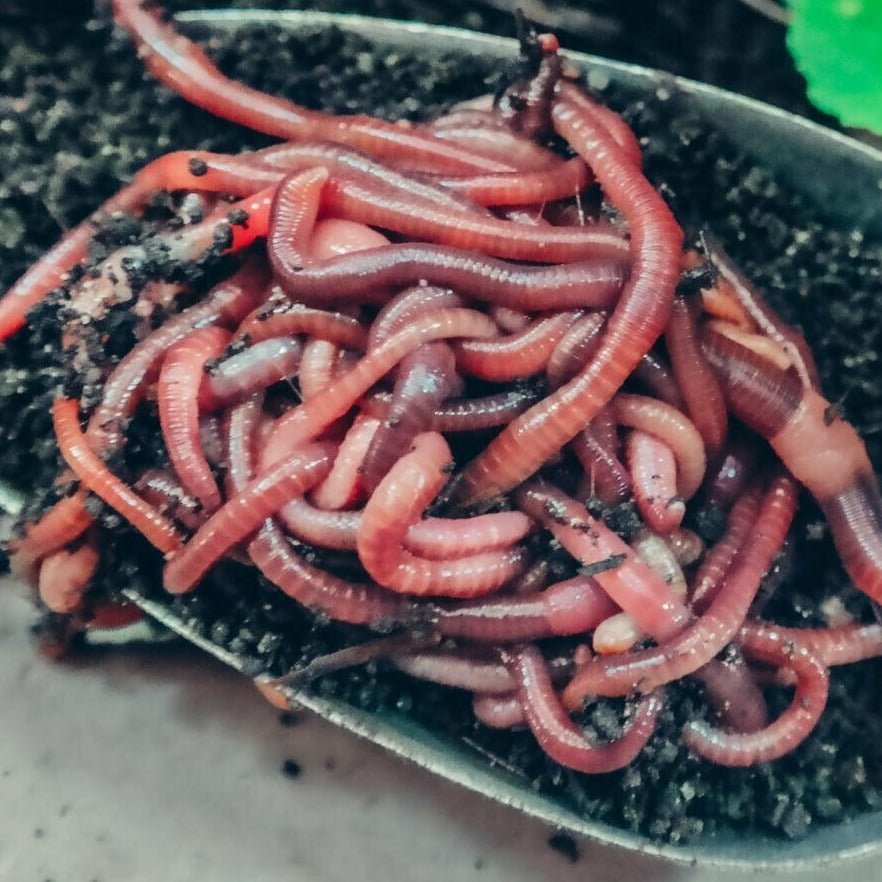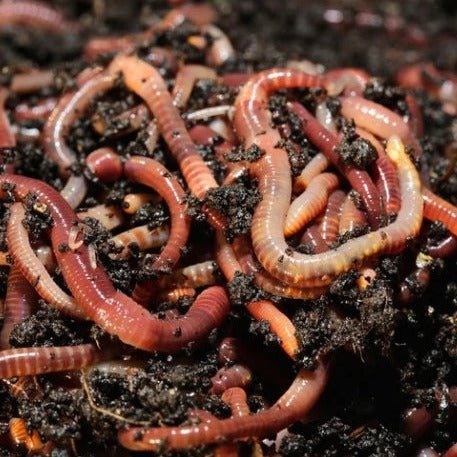Why Choose Red Wiggler Express for Fresh and Affordable Fishing Bait?
Discover the Benefits of Red Wigglers: Nature's Ideal Dirt Enrichers
These microorganisms not just excel in breaking down natural waste but likewise considerably boost dirt high quality, producing a flourishing ecosystem helpful to plant development. The question continues to be: how can we properly integrate these dirt enrichers into our gardening regimens to optimize their potential?
What Are Red Wigglers?
What exactly are red wigglers? Red wigglers, medically known as Eisenia fetida, are a types of earthworm renowned for their duty in vermicomposting.
Red wigglers have a high reproductive rate, allowing populations to expand rapidly in suitable conditions. They consume natural issue, including cooking area scraps and lawn waste, breaking it down into nutrient-rich castings that improve soil fertility. Unlike various other earthworm varieties, red wigglers favor a cooler environment and can tolerate high raw material content, that makes them excellent for composting systems.
These worms are generally used in home gardens, commercial agriculture, and waste monitoring systems as a result of their effectiveness in recycling nutrients and improving dirt framework - Lake Hickory Bait. Their presence in a compost bin indicates a healthy and balanced ecosystem, as they help balance wetness degrees and aerate the substratum. Recognizing the biology and behavior of red wigglers is crucial for maximizing their advantages in lasting agriculture and horticulture practices
Advantages of Vermicomposting
Vermicomposting, the process of utilizing red wigglers to decompose organic waste, supplies numerous advantages for both home garden enthusiasts and large-scale agricultural operations. Among the primary advantages is the reliable recycling of organic products, which reduces garbage dump waste and adds to a more lasting setting. By transforming cooking area scraps and yard waste right into nutrient-rich garden compost, vermicomposting advertises a round economic climate within houses and areas.
Additionally, vermicomposting improves the microbial task within the garden compost. Red wigglers excrete a substance referred to as worm castings, which is abundant in beneficial microorganisms. These microorganisms aid in breaking down raw material and improving nutrition accessibility for plants. Additionally, the existence of red wigglers in garden compost systems helps manage moisture degrees and boosts aeration, creating a healthier setting for disintegration.
The process is also reasonably reduced maintenance, making it available for individuals with limited horticulture experience. By making use of vermicomposting, customers can grow a sustainable practice that not only improves their yards but additionally promotes a deeper connection with ecological stewardship. In general, the benefits of vermicomposting extend past simple waste reduction, contributing to healthier communities and boosted agricultural practices.

Enhancing Dirt Quality
Enhancing dirt quality with the unification of red wigglers significantly benefits both home gardens and agricultural useful source landscapes. These earthworms play an important function in the soil community by breaking down organic matter and facilitating the decomposition procedure. As they eat natural waste, they create nutrient-rich castings that function as a natural plant food, boosting the dirt's nutrient material and structure.

(Lake Rhodhiss Bait)On top of that, red wigglers improve the soil's ability to keep moisture, reducing the demand for constant watering and making certain that plants get a constant supply of hydration. This moisture retention is particularly beneficial in drought-prone locations, producing a much more resilient yard or farming setting. Overall, including red wigglers right into soil management techniques causes enriched soil that sustains lasting gardening and farming initiatives.
Improving Plant Growth
The presence of red wigglers in dirt considerably boosts plant development, functioning as natural stimulants for healthier vegetation. These earthworms improve the soil framework, promoting better oygenation and drainage. Lake Hickory Bait. As they delve with the dirt, they produce networks that assist in root infiltration, allowing plants to gain access to important nutrients and water better
Moreover, red wigglers add to the nutrient cycle by damaging down organic issue into nutrient-rich spreadings. These castings are rich in nitrogen, phosphorus, and potassium, the key nutrients needed for plant wellness. Their slow-release nature guarantees that plants can soak up these nutrients in time, lowering the risk of nutrient leaching and supplying continual support for development.

Just How to Make Use Of Red Wigglers
Although many gardeners may be uninformed, including red wigglers right into their horticulture techniques can significantly enhance soil fertility and structure. These earthworms, known scientifically as Eisenia fetida, flourish in compost and raw material, making them suitable for vermicomposting systems. To start using red wigglers, establish a vermicomposting bin that is well-ventilated and includes a bed linen material such as shredded newspaper, cardboard, or coconut coir.
Add kitchen scraps like vegetable peels, coffee grounds, and crushed eggshells to provide a well balanced diet regimen for the worms. Stay clear of including meat, dairy products, and oily foods, as these can bring in bugs. On a regular basis keep an eye on dampness levels; the bedding should remain wet yet not soggy.
As the worms eat the natural waste, they produce nutrient-rich spreadings that can be harvested and blended into yard dirt or made use of as a fertilizer. A basic guideline is to make use of one component worm spreadings to three parts dirt for optimum results. Additionally, red wigglers can be introduced directly into garden beds to assist in natural aeration and improve microbial activity, therefore promoting much healthier plant development and boosted soil high quality.
Conclusion
Finally, the integration of red wigglers into composting techniques offers considerable benefits for soil enrichment and plant health and wellness. Their reliable decomposition of natural issue enhances soil framework, dampness retention, and microbial activity. By using these impressive organisms, gardeners can promote a lasting ecosystem that fosters healthy plant development and makes the most of nutrition schedule. Welcoming vermicomposting not just adds to environmental sustainability however additionally sustains the farming of thriving gardens, demonstrating the crucial function of red wigglers in eco-friendly equilibrium.